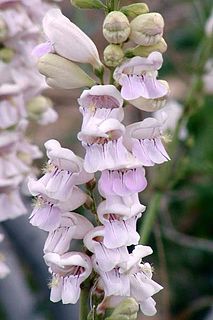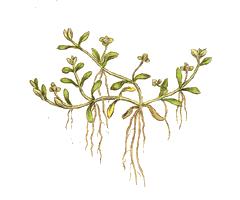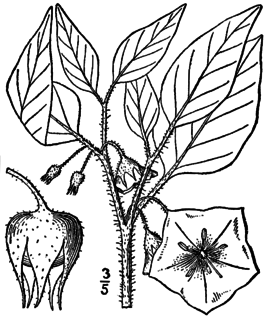
Penstemon, the beardtongues, is a large genus of roughly 250 species of flowering plants native mostly to the Nearctic, but with a few species also found in the North American portion of the Neotropics. It is the largest genus of flowering plants endemic to North America. Formerly placed in the family Scrophulariaceae by the Cronquist system, new genetic research has placed it in the vastly expanded family Plantaginaceae.

Dasiphora fruticosa is a species of hardy deciduous flowering shrub in the family Rosaceae, native to the cool temperate and subarctic regions of the northern hemisphere, often growing at high altitudes in mountains. Dasiphora fruticosa is still widely referenced in the horticultural literature under its synonym Potentilla fruticosa. Common names include shrubby cinquefoil, golden hardhack, bush cinquefoil, shrubby five-finger, widdy, and kuril tea.

Cercocarpus, commonly known as mountain mahogany, is a small genus of at least nine species of nitrogen-fixing flowering plants in the rose family, Rosaceae. They are native to the western United States and northern Mexico, where they grow in chaparral and semidesert habitats and climates, often at high altitudes. Several are found in the California chaparral and woodlands ecoregion.

Claytonia is a genus of flowering plants native to Asia, North America, and Central America. The vitamin-rich leaves can be eaten raw or cooked, and the tubers can be prepared like potatoes.

Dipterostemon is a monotypic genus of flowering plants in the family Asparagaceae. Its only species is Dipterostemon capitatus, synonym Dichelostemma capitatum, known by the common names blue dicks, purplehead and brodiaea, native to the Western United States and northwest Mexico.

Tageteae is a tribe of the plant family Asteraceae. It consists of approximately 260 species divided among 32 genera. All are found in the New World, with a center of diversity in the Mexican highlands. The type genus is Tagetes (marigolds).

Vauquelinia, commonly known as the rosewoods, is a genus of the rose family, Rosaceae. It consists of two species of shrubs found in the southwestern United States and northwestern Mexico. The genus was named for French chemist Louis Nicolas Vauquelin (1763-1829). The nectar provided by these plants is commonly fed on by wasps such as Polistes instabilis.

Lewisia is a plant genus, named for the American explorer Meriwether Lewis (1774-1809) who encountered the species in 1806. The native habitat of Lewisia species is north facing cliffs in western North America. Local Native Americans ate the roots, which have also been used to treat sore throats.

Elatine is one of only two genera in the plant family Elatinaceae, the waterwort family. It contains about 25 species of aquatic plants known generally as waterworts. These are annual or perennial plants found in wet areas worldwide.

Orbexilum, commonly called leather-root, is a genus of flowering plants in the legume family (Fabaceae). They are native to North America, where they are found in the United States and Mexico, south to Chiapas.

The tribe Millettieae, also known as the Wisteria tribe is one of the subdivisions of the plant family Fabaceae.
Thelypodiopsis is a genus of flowering plants belonging to the family Brassicaceae.
Telesonix is a genus of flowering plants belonging to the family Saxifragaceae.
Chlorocrambe is a genus of flowering plants belonging to the family Brassicaceae.
Conimitella is a genus of flowering plants belonging to the family Saxifragaceae.

Suckleya is a monotypic genus of flowering plant belonging to the family Amaranthaceae. It only contains one known species, Suckleya suckleyana(Torr.) Rydb.

Leucophysalis is a genus of flowering plants belonging to the family Solanaceae.
Elmera is a monotypic genus of flowering plants belonging to the family Saxifragaceae. It contains one species, Elmera racemosa(S.Watson) Rydb..
Giliastrum is a genus of flowering plants belonging to the family Polemoniaceae.
Hesperothamnus is a genus of flowering plants belonging to the family Fabaceae.












